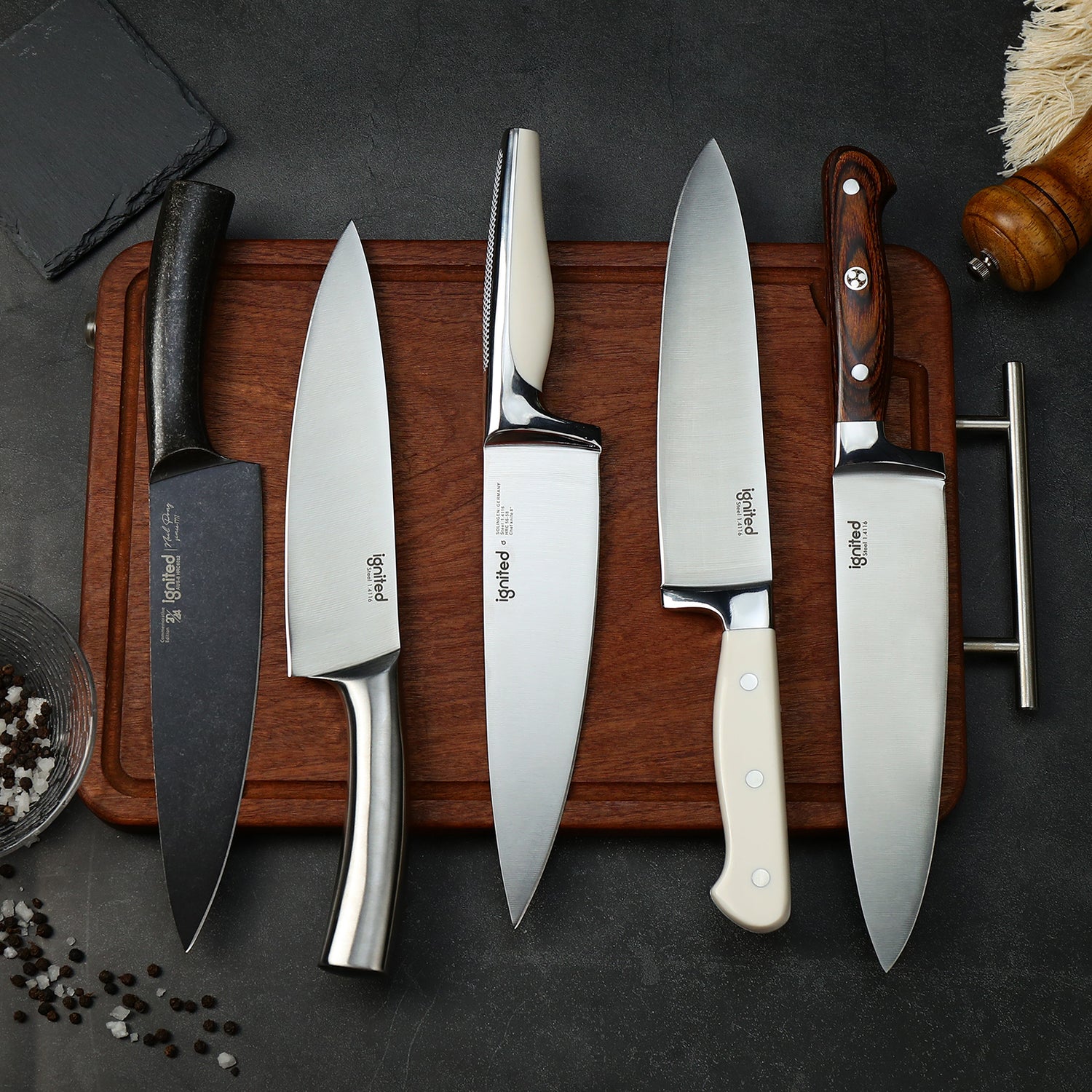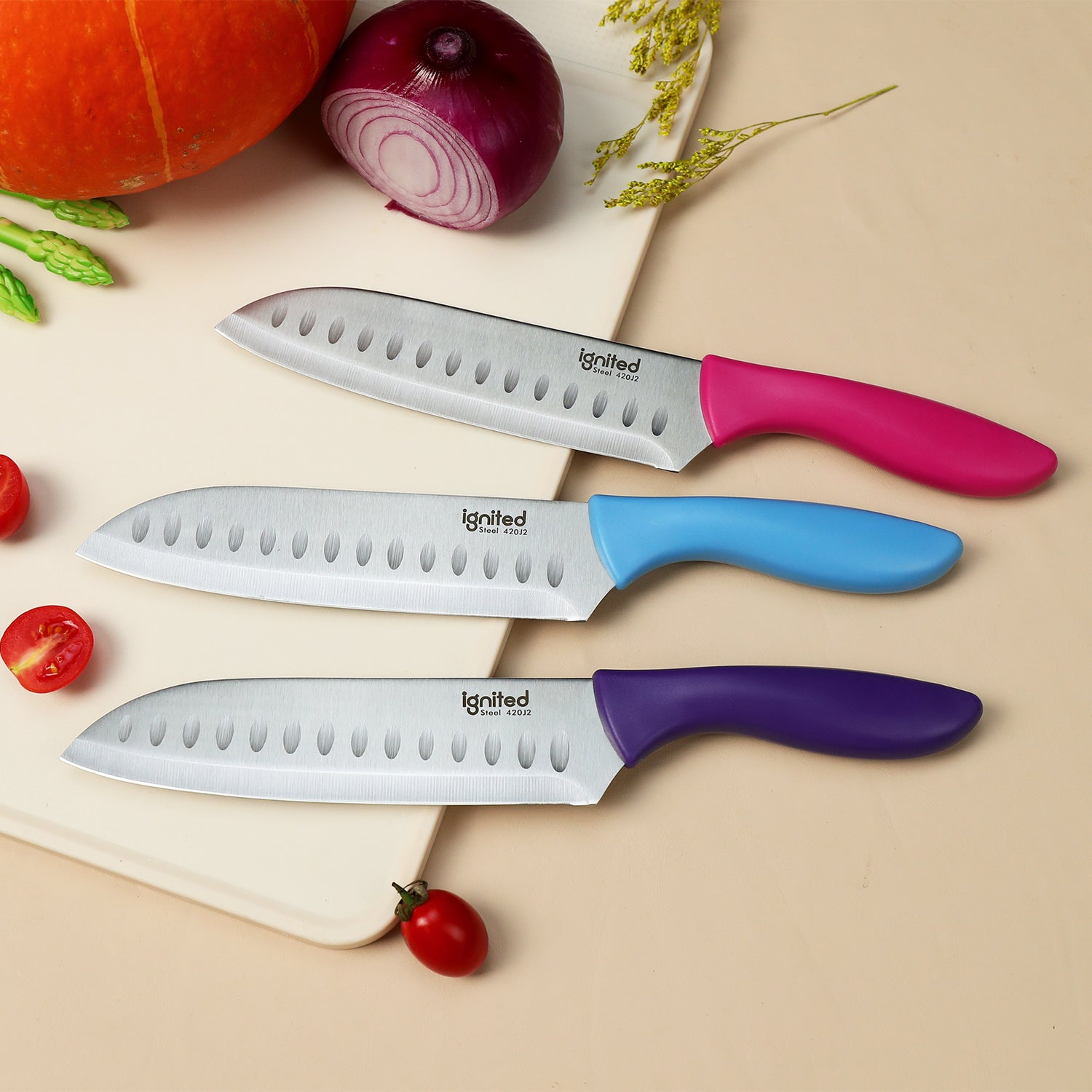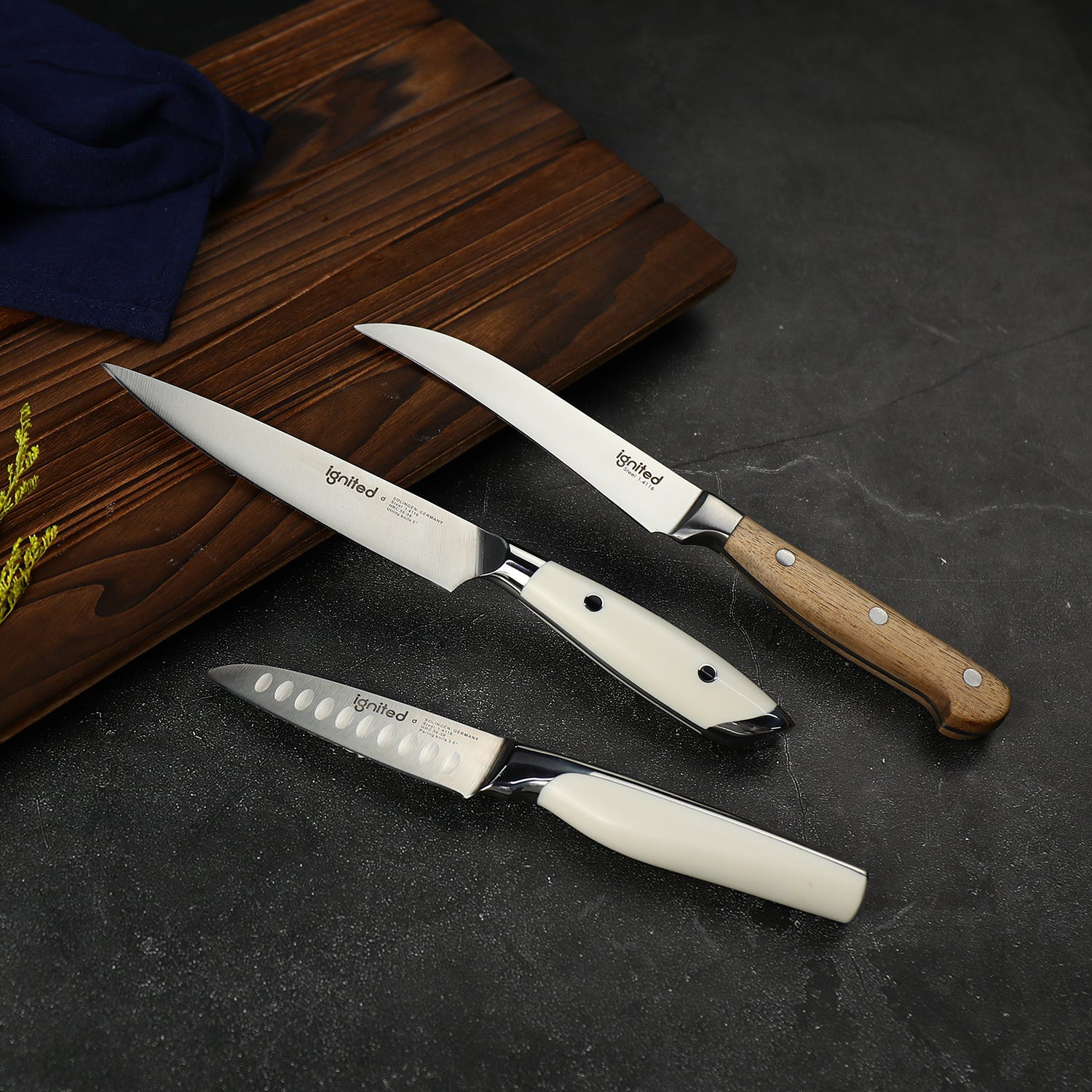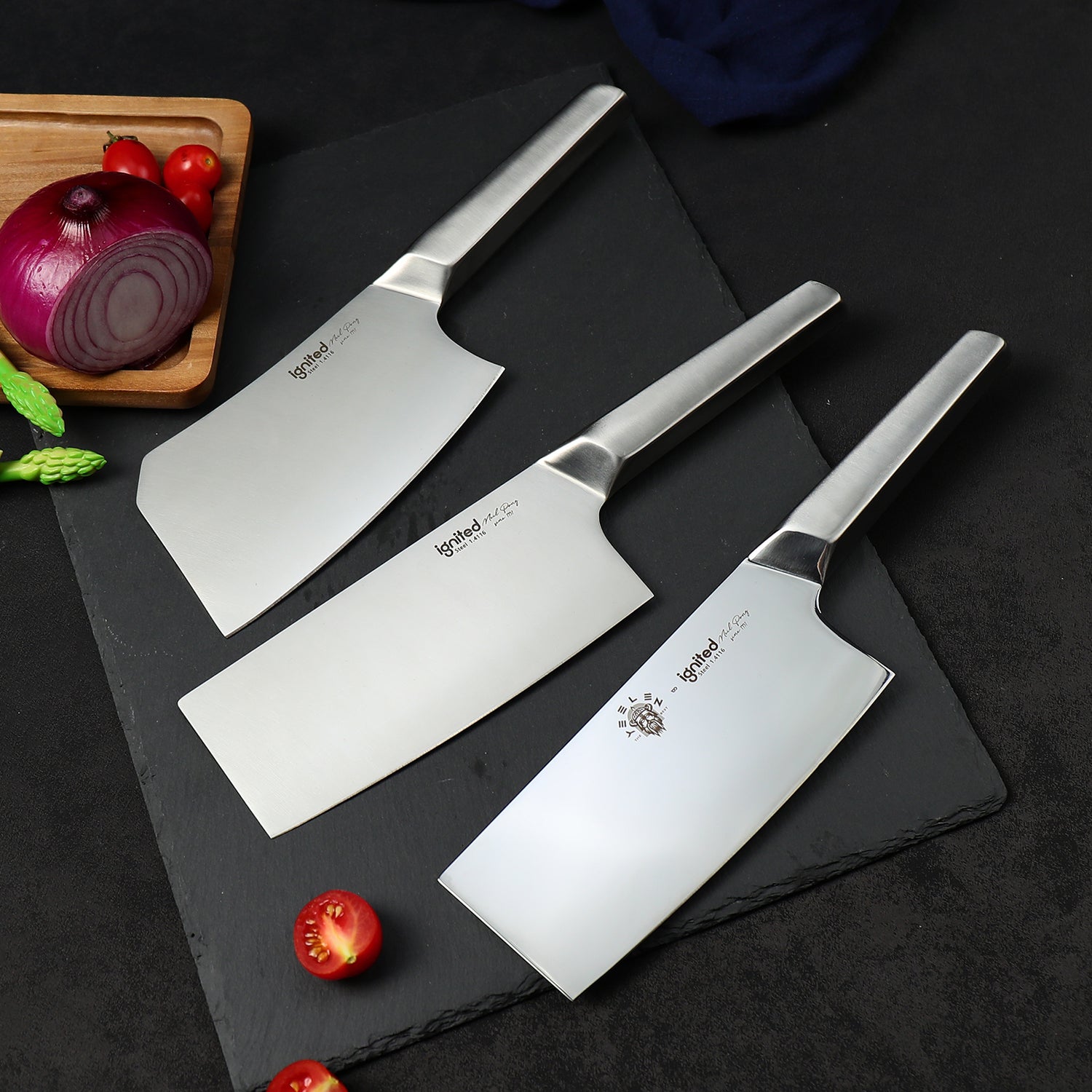Poultry shears are heavy-duty kitchen scissors designed to cut through bones, joints, and tough meat with ease. Whether you’re breaking down a whole chicken, trimming fat, or spatchcocking a turkey, a good pair of poultry shears makes the job faster and safer than using a knife alone. In this guide, Ignited Cutlery explains what poultry shears are, their main uses, the different types, and how to choose and care for them.

Content Menu
- What Are Poultry Shears?
- Why Use Poultry Shears?
- Primary Uses of Poultry Shears
- Types of Poultry Shears
- How to Choose Poultry Shears
- Caring for Your Poultry Shears
- Conclusion
- FAQs
What Are Poultry Shears?
Poultry shears are robust scissors specially built to handle tasks that ordinary kitchen scissors can’t. They usually have long, curved, or serrated blades for gripping slippery skin and bones. Many designs include a bone notch for extra leverage and spring-loaded handles to reduce hand fatigue.
Why Use Poultry Shears?
When working with whole birds, a chef’s knife isn’t always the best option for cutting through joints, bones, or cartilage. Poultry shears offer better control and safety, allowing you to break down a bird without slipping or putting your hands in danger. They’re also perfect for precision tasks like trimming excess fat or cutting herbs and bacon during meal prep.
Primary Uses of Poultry Shears
- Spatchcocking: Cut along the backbone of a whole chicken or turkey to flatten it for even roasting or grilling.
- Portioning: Divide a whole bird into thighs, wings, and breast pieces easily.
- Trimming: Remove excess fat, skin, or unwanted parts for cleaner presentation and healthier cooking.
- Other Uses: Some cooks use poultry shears for tasks like cutting herbs, slicing pizza, or trimming fish fins.
Types of Poultry Shears
There are a few common designs:
- Spring-Loaded Shears: Reduce hand strain by automatically reopening after each cut.
- Curved Blade Shears: Follow the bird’s natural contours for smoother cuts.
- Straight Blade Shears: Versatile, general-purpose shears for different kitchen cutting needs.
- Detachable Blade Shears: Easier to clean and sanitize thoroughly, important when handling raw poultry.
How to Choose Poultry Shears
- Blade Strength: Look for stainless steel blades that are corrosion-resistant and durable enough for bones and joints.
- Handle Comfort: Ergonomic, non-slip grips help maintain control when cutting through tough spots.
- Safety Lock: Many quality shears include a lock mechanism to keep blades closed when not in use.
- Ease of Cleaning: Consider detachable blades or dishwasher-safe designs, but hand washing is always best for longevity.
Caring for Your Poultry Shears
- Always wash poultry shears by hand with hot, soapy water after use.
- Dry them immediately to prevent rust and maintain hygiene.
- Sharpen blades as needed for clean, precise cuts.
- Store shears locked in a safe place, away from other utensils to avoid dulling the blades.
Conclusion
Every home cook who works with whole chickens, turkeys, or ducks should own a pair of quality poultry shears. They save time, improve safety, and make meal prep more efficient. Explore Ignited Cutlery’s collection to find durable, ergonomic poultry shears that make handling poultry a breeze.
FAQs
Q: Can I use regular scissors instead of poultry shears?
A: Regular kitchen scissors usually aren’t strong enough for bones and joints. Poultry shears are specifically built for these tough tasks.
Q: Are poultry shears dishwasher safe?
A: Some are, but hand washing is always recommended to preserve sharpness and prevent corrosion.
Q: How often should I sharpen poultry shears?
A: This depends on use, but regular honing or professional sharpening once or twice a year keeps them performing well.
Q: What else can poultry shears cut?
A: Many home cooks use them for other tasks like trimming herbs, cutting parchment paper, or even opening tough packaging.




